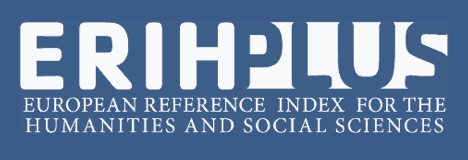Threats to speleological heritage from jandaíra, rn: the importance of environmental preservation
Abstract
Jandaíra - RN, inserted into mesoregion Agreste Potiguar and microrregion Baixa Verde, presents major areas of karst relief with an incidence of caves, which suffer continuous threats of lime and cement industry as well as disordered visits, causing depredation and pollution to speleological heritage. Considering the above, we aimed to discuss the importance of environmental preservation in areas where they occur the caves of Jandaíra, given the high potential paleontological and speleological, from the environmental studies conducted at the sector analyzed with students from Course of Degree in Geography Federal Institute of Education, Science and Technology of Rio Grande do Norte, Natal Central Campus and guides Cavernature Group of Speleology (Speleological Association, Socio-Cultural and Environmental History from the City of Jandaíra - RN). The results showed that the analyzed area suffers from the exploitation of limestone rock, existing caatinga deforestation to feed the furnaces in adjacent industries, graffiti and pollution of cave environments. This way, we conclude that there is an absence of public authorities with initiatives to minimize such impacts, as well as the deficiency in promoting scientific research reveals the existence of possible fossils in the study area.
References
BAGNOLI, Eduardo. O Lajedo de Soledade, Apodi (RN) um exemplo de preservação do patrimônio cultural brasileiro. Revista de Arqueologia, São Paulo, 8(1):239-253, 1994. Disponível em: http://www.revista.sabnet.com.br/index.php/revista-de-arqueologia/article/viewFile/324/325. Acesso em: 06 fev. 2016.
BELTRÃO, Breno Augusto et al (Org.). Projeto cadastro de fontes de abastecimento por água subterrânea estado do Rio Grande do Norte: diagnóstico do município de Jandaíra. Recife: CPRM/PRODEM, 2005. 21 p. Disponível em: < http://www.cprm.gov.br/rehi/atlas/rgnorte/relatorios/JAND058.PDFF>. Acesso em: 12 fev. 2016.
BENAIM, Natalia Pereira; SENRA, Maria Célia Elias. O Gênero Pholadomya Sowerby, 1823 (Mollusca: Bivalvia) na Formação Jandaíra (Cretáceo Superior), Bacia Potiguar: Implicações Paleoecológicas e Paleogeográficas. Anuário do Instituto de Geociências - UFRJ, Rio de Janneiro, v. 31, n. 1, p.88-97, 2008. Disponível em:
BUENO, Míriam Aparecida. A IMPORTÂNCIA DO ESTUDO DO MEIO NA PRÁTICA DE ENSINO EM GEOGRAFIA FÍSICA. Boletim Goiano de Geografia, Goiânia, v. 29, n. 2, p.185-198, dez. 2009. Semestral. Disponível em:
CRUZ, Jocy Brandão et al. Diagnóstico Espeleológico do Rio Grande do Norte. Revista Brasileira de Espeleologia, Brasília, v. 1, n. 1, p.1-24, 2010. Disponível em:
CRUZ, Jocy et al. Projeto Cavernas de Jandaíra. In: XXVII CONGRESSO BRASILEIRO DE ESPELEOLOGIA, 27., 2003, Januária. Anais... . Januária: Sociedade Brasileira de Espeleologia, 2003. p. 34 - 38. Disponível em:
FERREIRA, Daniel Kim; SILVA, Sebastião Milton Pinheiro da. Delimitação de afloramentos de calcários da Formação Jandaíra utilizando dados LANDSAT 7/ETM+. Sociedade e Território, Natal, v. 26, n. 2, p.31-43, 2014. Disponível em:
IBGE. Censo demográfico 2010: Jandaíra. Disponível em:
INSTITUTO CHICO MENDES DE CONSERVAÇÃO DA BIODIVERSIDADE (Natal). Ministério do Meio Ambiente. Projeto Karst Jandaíra: caracterização da sensibilidade ambiental e mapeamento das cavernas de Felipe guerra e do Sítio Espeleológico da Furna Feia e áreas cársticas adjacentes. Natal: Cecav, 2011. 342 p. Disponível em:
LOPES, Claudivan Sanches; PONTUSCHKA, Nídia Nacib. Estudo do meio: teoria e prática. Geografia (londrina), Londrina, v. 18, n. 2, p.173-191, 2009. Disponível em:
MEDEIROS, Rita de Cássai Surrage de. Levantamento preliminar das Cavernas do Estado do Rio Grande do Norte, Brasil. In: 13 TH INTERNACIONAL CONGRESS OF SPELEOLOGY, 13., 2001, Brasília. Anais... . Brasília: Sbe, 2001. p. 481 - 484. Disponível em:
MONTEIRO, Felipe Augusto Correia; MEIRELLES, Carlos Augusto Oliveira de; SOARES, Marcelo de Oliveira. Bivalves fósseis do gênero Neithea (Bivalvia: Pectinidae) e seu significado paleobiogeográfico para o domínio tetiano na Bacia Potiguar. Geociências Unesp, São Paulo, v. 29, n. 5, p.335-341, 2010. Disponível em:
NETTO, Solon Almeida. Conflito ambiental no Mato Grande. Revista Lajedos, [s .l.]., v. 3, n. 1, p.22-28, dez. 2011. Disponível em:
PILÓ, Luís B. Geomorfologia Cárstica. Revista Brasileira de Geomorfologia, [Porto Alegre], v. 1, n. 1, p.88-102, 2000. Anual. Disponível em:
PONTUSCHKA, Nídia Nacib; PAGANELLI, Tomoko Lyda; CACETE, Núria Hanglei. Para ensinar e aprender geografia. 3° ed. São Paulo: Cortez, 2009.
TORRES, Fillipe Tamiozzo Pereira; MARQUES NETO, Roberto; MENEZES, Sebastião de Oliveira. Introdução à Geomorfologia. São Paulo: Cengage Learning, 2012.
VIEIRA, Percy Corrêa. Contribuição da morfologia dos fósseis para dedução de paleoambientes. Rev. Inst. Geol. [online]. 1980, vol.1, n.2, pp. 33-38. ISSN 0100-929X. http://dx.doi.org/10.5935/0100-929X.19800008.
Keywords
Policy Proposal for Free Access Journals
Authors who publish in this journal agree to the following terms:
a. Authors retain the copyright and grant the journal the right of first publication, with the work simultaneously licensed under the Creative Commons Attribution License which allows the sharing of the work with acknowledgment of the authorship of the work and initial publication in this journal.
b. Authors are authorized to take additional contracts separately, for non-exclusive distribution of the version of the work published in this journal (eg publish in institutional repository or as a book chapter), with acknowledgment of authorship and initial publication in this journal.
c. Authors are allowed and encouraged to publish and distribute their work online (eg in institutional repositories or on their personal page) at any point before or during the editorial process, as this can generate productive changes, as well as increase the impact and The citation of published work (See The Effect of Free Access).





















